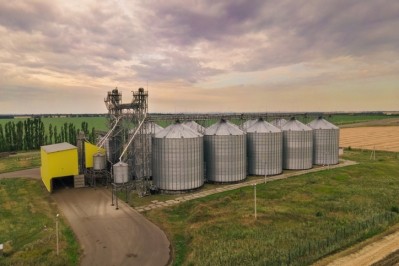Reports from IPPE
AFIA: What has the US feed industry learnt from working through the COVID-19 pandemic?

The AFIA lead said those roundtable discussions comprised a diverse group of US feed industry company members who revealed how they adjusted to a changing environment in a year ravaged by the virus.
The theme that immediately emerged as a common thread among all the participants in those talks was that employee safety became paramount from March 2020 onwards. Companies evaluated their sick leave policies and began to adjust them to make them more flexible for employees, reported Cullman.
Beyond sick leave policy amendments, most companies moved quickly also to halt travel, particularly travel than involved airlines or other instances where staff would be in confined spaces with other travelers.
Feed manufacturers also reduced the number of people in the office and the plant, and, in many cases, immediately instigated 'work from home' policies for office employees so they were able to additionally protect those members of staff whose presence was required on site to get the job done.
Companies also limited visitors thereafter. They shut down open spaces where employees integrated and distributed personal protection equipment (PPE) including face masks and hand sanitizers so the team would be properly equipped to mitigate the spread of the virus.
Cullman said the participants reported that they found it was just as critical to invest in their essential workforce ‘off the clock’ as much as ‘on the clock’.
“We heard stories of companies that provided additional COVID-19 leave so employees could feel confident they would have the time to stay home, and properly safeguard themselves and their families in quarantine without fear they would run out of sick leave or personal time that would jeopardize their job.”
Some companies either covered the cost of testing or actually organized testing procedures on site for employees that needed to come into a facility. “This provided huge peace of mind for employees.”
Many firms offered bonuses to essential employees, recognizing the sacrifices they were making.
Transparency is key
Communication was recognised as being extremely critical - it was less important a particular policy a company took and more important about how well, how clearly and how timely that company conveyed any new steps and procedures to their employees, said the AFIA lead.
Most companies stressed the importance of transparency in this respect, letting employees know what was going on, how decisions were being made and being very clear about expectations. There were many channels for feedback set up so managers could understand the challenges that individuals and teams were facing and being able to factor those into how the company moved forward.
Companies adopted and embraced a lot of new technology platforms as well, from Teams to WorkPlace to Slack, and that technology not only enabled staff to work remotely but it also supported much needed social interaction.
Work-life balance
With limited opportunities to take time off, feed companies noted that policy changes to allow employees carry over vacation days really boosted staff morale, said Cullman.
The idea of employers now having to ensure employees could balance work-life commitments was really to the fore. Suddenly, employers found that they needed to be aware of school and childcare challenges, like never before. Some feed companies provided tutors to their employees’ children.
In such a science intense industry as the US feed sector, there were great opportunities for people to step forward and help their colleagues’ children with homework projects, said the participants.
Health and wellness seminars proved fundamental to emotional and physical health of employees as they navigated the unusual circumstances, they also reported.
Collaboration with local, state and federal authorities
A fifth theme was that, in tough times, collaboration is essential.
“So many companies emphasized the development of a cross-functional response team, a team that was able to come together across all aspects of the company, reach out and actually engage everyone in responding to the crisis. There was a lot of interaction with the local, state and federal government to ensure the proper systems were put in place, that employees were able to go to work without violating curfews, that there was a recognition of them as essential workers, that there would be enough PPE available to essential workers.”
Many different aspects of the success of getting through COVID-19 meant partnering and collaboration with government at all different levels, said the AFIA president.
Regulators from the US Food and Drug Administration (FDA) to the Occupational Safety and Health Administration (OSHA) to the Centers for Disease Control and Prevention (CDC) were often named by participants in the roundtables as important in terms of getting clear communication from a regulatory standpoint as well as from an employee health and safety standpoint, on federal government guidelines, and they helped companies to respond clearly and appropriately and to protect the health and safety of their workers.
“We found that agencies were very open and had a ready ear to hear from companies about the challenges they faced and what could be helpful for them,” reported Cullman.
Companies said they also worked well with health clinics locally to put testing procedures in place for their employees on a regular basis.
Also, of note, participants said that when raw materials were limited or unavailable because of COVID-19 linked shipping or production constraints, a lot of effort was made by AFIA members into understanding how supplies could be diversified, in order to maintain resilience in the supply chain.








